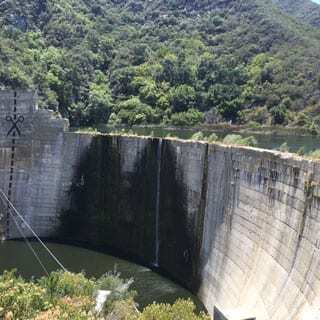Matilija Dam Removal Plan

Photo: Mike Wier
DamNation producer Matt Stoecker gives an update on the fight to demolish the United States’ derelict dams and restore fish-friendly watersheds in a recent National Geographic article. Near the top of his list is Southern California’s Matilija Dam near Santa Barbara on a tributary to the Ventura River.
After two decades of negotiations, stakeholders are designing the final demolition plans and raising bridges downstream to clear the future water level. The free-flowing river should replenish sand-starved coastlines and bring back traditional steelhead spawning grounds (the dam’s original design didn’t include fish passage).
Matilija Dam removal is on CalTrout’s radar as well. Our Southern California office is a member of the Matilija Coalition and assisted in the compilation of a Ventura County Watershed Protection District proposal. That proposal, submitted to the California Department of Fish and Wildlife’s Prop 1 Watershed Restoration Grant Program, would provide funding for the first steps of dam removal planning and design. The project will manage headwaters for multiple benefits, protect and restore salmon and steelhead fish habitat, and protect and restore coastal wetland ecosystems.
Since its construction in 1947, the 168-foot-high, arched concrete Matilija Dam has blocked steelhead migration as well as the transport of nearly 8 million cubic yards of sediment, preventing it from naturally moving downstream to the ocean.






3 Comments
For many years the dam on Malibu creek was on the Cal Trout radar – but the dam still stands. How about an effort to get the Malibu Creek dam demolished as once promised.
Yep, that’s what we need in a growing state with droughts in the foreseeable future and low snowpack from global warming: less water storage.
Dude. The dam is entirely filled with sediment. It contains zero water storage. Filled up almost entirely within 20 years.